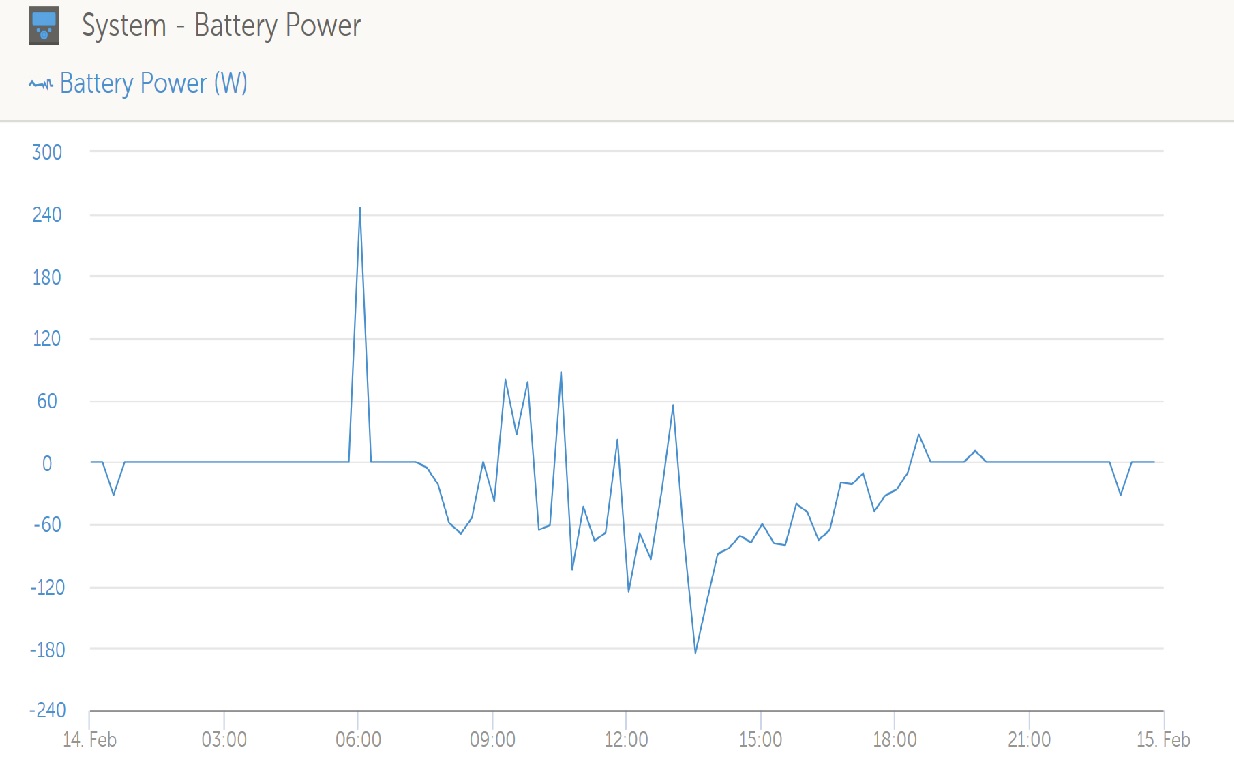I have a grid-tied system intended as back-up system including excess solar feed in into grid. Some particulars:
Solar panels 2,4 kwP
Smartsolar MPPT 150-100
Multigrid II 48/3000/35/32 230V
ColorControl GX
4x12V-136Ah lead acid batteries (third party).
ESS is applicable with mode "keep batteries charged" and "feed-in exces solarcharger power". Also absorption voltage and float voltage according manufacturer's specs.
This is working well except that I noted that during daytime (solar available; inverted to 230V and used for load and feed-in) the batteries are being discharged in small amounts as well. It looks like the more solar inverted (i.e. fan on multigrid) the higher the discharge rate of the batteries will be (max approx 100W). The result is that at the end of the day SOC of the batteries has been lowered and overnight it is being kept steady (including floatvoltage is maintained). So each day the SOC of the batteries is lower (approx 7-8%). For this I have two (2) questions:
1) How are the batteries supposed to be charged again? I assume "keep batteries charged" means on or up to SOC 100% (for back-up reasons).
2) Each day my batteries have lower SOC but the voltage is steady floatvoltage. How does this effect the start of the charge-sequence as according to manual switch float-to-bulk will be at 1.3V below float voltage? And eventually will it recognise the dynamic cut-off as float voltage is kept continious?
At this moment the only option I know is to reset the system in order to start Multigrid in bulk. For now this is okay to reset the system once every couple of days. But when I leave home for longer periods and I am not able to reset?
I would appreciate some help and/or clarification with this. Thanks in advance.




